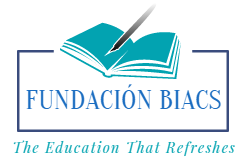The most essential thing for all educators is to develop safe ways for pupils to continue receiving the education they deserve. Teachers want kids to feel safe and secure while still allowing them to study and grow. Students are likely to be concerned about their education as things continue to alter and move. Parents care deeply about their children’s education, and educators must be prepared to give the finest chances for kids. Every teacher has to attend online cultural sensitivity training to get a premium in certification programs.
Table of Contents
What Do You All Need To Know About The Virtual Teacher Certification guide?
Video Conferencing Systems:
Many online teachers will still wish to hold lectures or teaching time for students via video conferencing. There are a variety of video conferencing alternatives available that allow teachers to interact with their students at set times throughout the day. Educators commonly use Zoom, Microsoft Teams, and Google Hangouts.
These video conferencing systems allow online professors to schedule when their students will check in to attend a lecture or have class, allowing those who teach online to help explain topics in a form that students can see. Even intercultural training programs are conducted through conferencing systems. They can also allow students to collaborate on projects or meet one-on-one with the person who teaches them.
Teachers should communicate with parents about how they expect the school year to proceed so that parents can assist in ensuring that students have the equipment, setup, and technology abilities they’ll need to succeed.
Parents will be required to assist in answering questions and working on assignments for the online courses and lessons, therefore teachers must communicate with them regularly about the expectations for their pupils. Parents are now more than ever playing an important role in their child’s virtual education because it is taking place at home, with them nearby.
Recorded Video Lectures:
Teachers who don’t want to put up a live video conference in their classroom may decide to use previously recorded recordings instead. Teachers can make movies for their pupils using a webcam or a video recorder.
Teachers can use free apps like YouTube, Vimeo, and Microsoft Teams to share videos with their students. This allows professors to record themselves presenting lectures and allow students to see them at their leisure.
Constructionism:
It claims that learning is most successful when you’re building something for others to enjoy. A culture workshop might range from a simple spoken sentence to a more sophisticated painting or presentation.
You might read this page multiple times and still forget it tomorrow, but if you were required to explain these principles to someone else in your own words, or create a slideshow that illustrated these topics, you would develop a deeper understanding that is more integrated into your views.
Screen Capture Technology:
It allows teachers to show what they’re doing on their computers to help students learn. When teachers are showing students how to set up a project, explaining a topic, or trying to demonstrate to pupils what they need to accomplish, this can be quite useful. Teachers who want to share their screen with students can use Screencast-O-Matic, Loom, or Camtasia.
Take Courses:
A Specialization is a collection of courses that will teach you how to master a specific skill and get a virtual teacher certification. To get started, enroll in the Specialization right now, or peruse the courses and pick the one you want to start with.
When you sign up for a course that is part of a Specialization, you are also signed up for the entire Specialization. It’s fine if you only finish one course; you can halt your studies or cancel your subscription at any moment. Sign in to the trainee dashboards to stay abreast of your program admissions and achievements.
Hands-on Experience:
A hands-on project is included in every culture workshop Specialization. To complete the Specialization and obtain your certificate, you must complete all of the projects successfully. If the Specialization contains a separate course for the hands-on project, you must first complete all other courses before beginning it.

An online control center can help educators who educate and communicate with students digitally in online courses or classrooms stay organized. Teachers can use this system to send comments to their classes, schedule lessons, discuss online courses and lessons, post assignments, and have students turn in their work. Teachers use Google Classroom, Canvas, and Blackboard, which are all popular classroom management systems.
These systems allow teachers to set up their classrooms in an ordered manner, ensuring that pupils are aware of what they need to accomplish and when they need to do it. Students can use this system to engage in debates, connect with their teacher, and more.
Collaboration:
As an instructor, you focus on the experiences that will best create learning from the learner’s perspective, rather than simply posting and assessing the knowledge you believe they should know.
Each student in a class may and should be both a teacher and a learner. Your job shifts from being the sole source of information to that of a mentor and role model. Cultural training programs can be conducted to the students in a way you engage with students in ways that address their own learning needs.
By moderating discussions and activities in a way that collectively guides students toward the wider learning goals of the class.
Assisting Tools:
Teachers who are transitioning to online education must rely on new technology techniques to engage with their pupils. Showing kids third-party videos, using visual aids, developing intriguing projects, and more are all options. YouTube, Powerpoint, Prezi, and learning games may all be used to make your online classroom more interactive and visual.
Conclusion
Internet teaching is the freshest and most powerful technique of distant public education. Throughout the last year, it’s had a substantial influence on university education, and this tendency is projected to accelerate. So basically, teachers have to complete their certification courses to handle their students, and the trend is expected to continue.

